How to calculate PAYE in Nigeria?
If you are looking for an explanation of how to calculate PAYE in Nigeria, you have come to the right place! In this article, you will find some useful information on what PAYE actually is, how it works and where it stands among other taxes in Nigeria.

Taxation in Nigeria

Let’s take a moment to review the Nigerian taxation system before we jump into details about PAYE itself.
The agency responsible for collecting taxes in Nigeria is called Federal Inland Revenue Service or FIRS for short. Nigerian citizens and companies are required to pay nine taxes. These are:
- Capital Gains Tax;
- Companies Income Tax;
- Educational Tax;
- National Information Technology Development Fund Levy;
- Personal Income Tax;
- Petroleum Profit Tax;
- Stamp Duties;
- Value Added Tax;
- and Withholding Tax.
However, out of all these, this article only revolves around the Personal Income Tax, or PIT. To be more precise, we are going to be talking about PAYE.
PAYE tax
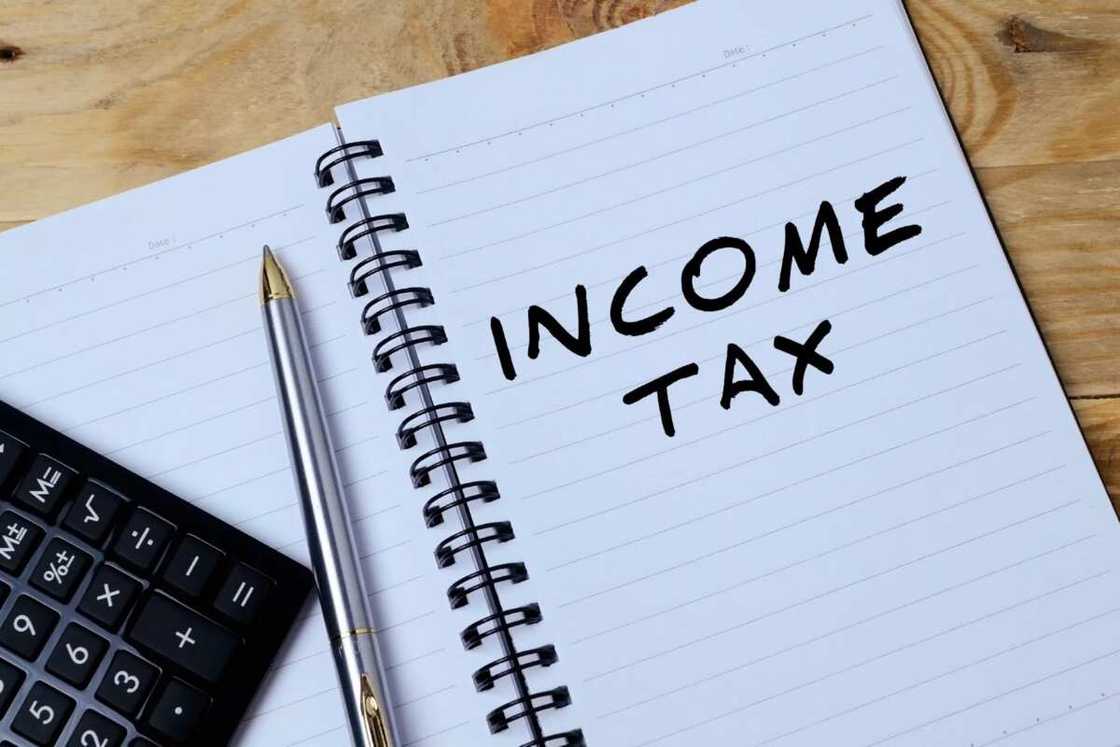
So what exactly is PAYE? This abbreviation stands for Pay As You Earn. It is a system, through which people who earn their salaries in Nigeria can pay their Personal Income Taxes. PAYE is quite a widespread system, used in many other countries, including the United Kingdom, New Zealand, Australia, etc.
Through PAYE, Nigerian employers withhold a portion of their employees’ salaries and pay that money on behalf of the employees to FIRS. In the end, employees receive their net salaries, with the Personal Income Tax already deducted.
Some categories of people are exempt from paying the PIT. These include:
- residents of Abuja FCT;
- foreign residents who receive income in Nigeria;
- Nigerian military personnel (including people who serve in Nigerian Foreign Service).
Important thing:
According to PAYE, the taxes you pay go to the state of your residence. So if you live, for example, in Kaduna State, but work in Osun State, you are required to pay taxes to Kaduna State.

Read also
Over 100 million Nigerians don’t pay tax, government laments low tax income, begs Nigerians
Now that we are done with theory, let’s get to the practice.
PAYE calculation in Nigeria

READ ALSO: What is withholding tax in Nigeria?
For a person who knows next to nothing about economy, tax calculation might seem incredibly confusing. Trust us, even some professional economists cower in fear when they see the tax system they have to deal with. But if you want to figure this out, you will have to do your best and try to understand it.
So this is how it works:
Before you figure out how much of your salary you will have to give to FIRS, you need to calculate the amount of taxable income. This means that you need to deduct reliefs and exemptions. These include the consolidated relief allowance (CRA), money to spend on children (up to 4) and/or dependent relatives (up to 2) and a payment to the pension fund. Some people also include their payments to the National Housing Fund, Life Assurance and National Health Insurance.
Up until 2012, consolidated relief allowance did not exist. Instead, there were several separate personal reliefs, which included housing, meals, utilities and other things. Since 2012, they were combined into one thing. Now it stands at 20% of gross income (GI) with the added ₦200,000 or 1% of GI, if the yearly salary is less than ₦200,000.
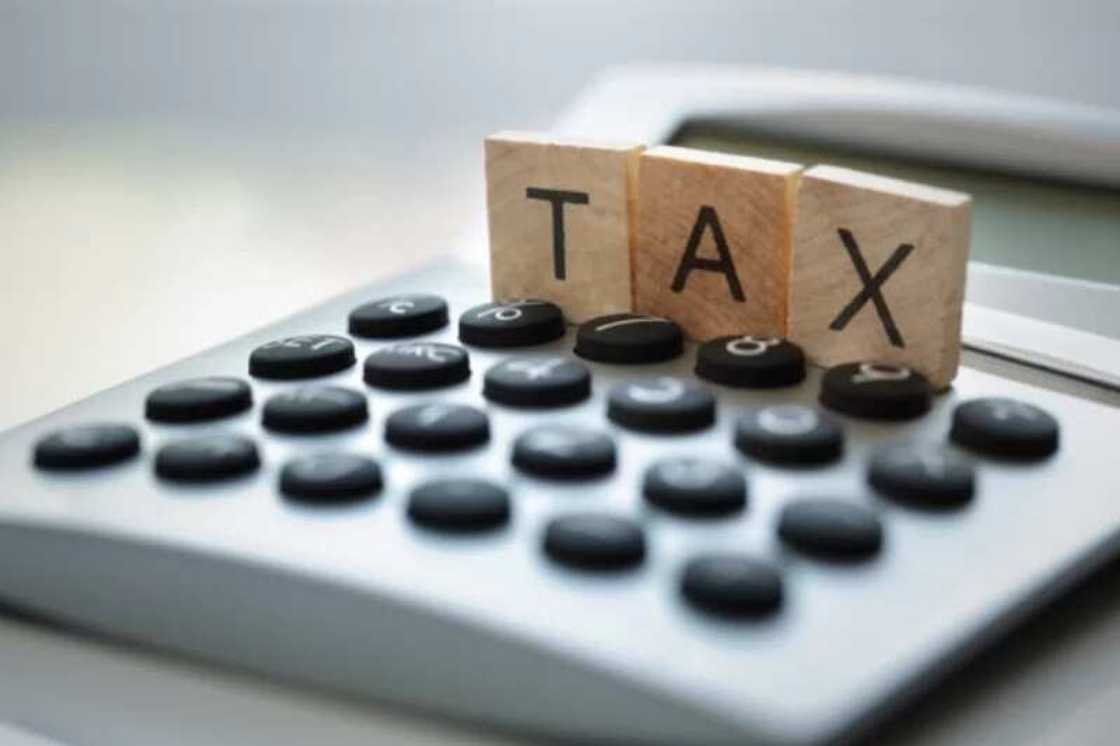
Therefore, to calculate the taxable income, you need to deduct:
- CRA (20% of GI + ₦200,000 OR 1% of GI);
- reliefs on children (₦2,500 per kid) and/or dependent relatives (₦2,000 per relative);
- pension relief (at least 8%);
- and other payments, if applicable.
After you have calculated your taxable income, you can finally move on to calculating PAYE. For that, you will definitely need a calculator, a pen and a piece of paper, as there is quite a lot to take in. Alternatively, if you are handy with Microsoft Excel, you can program it to do the calculations for you.
For the first ₦300,000 of your annual income, the PIT rate is 7%. For the next ₦300,000, the rate is 11%. For the next ₦500,000, it is 15%; for ₦500,000 after that, it is 19%. The next ₦1,600,000 are taxed at 21%, and everything else over ₦3,200,000 is taxed at 24%.
You need to take your taxable income, calculate the amount of tax payable for each of the segments, add them up, and you will receive the amount of tax you need to pay through PAYE.
Too confusing?
Continue reading for a more detailed breakdown of the calculation.
Step-by-step guide on how to calculate PAYE in Nigeria
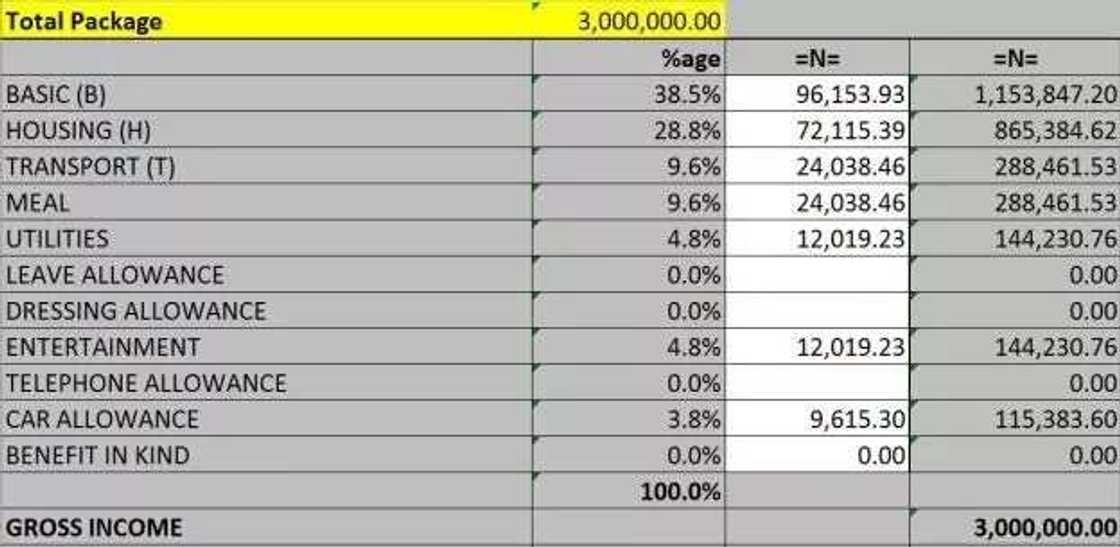
In order for you to understand it better, let’s use an example of a random imaginary person. Let’s say that this person earns a yearly gross income of ₦3,000,000. They have no children or dependent relatives, but they contribute 2,5% to the NHF.
In the image above, you can see a full breakdown of their salary. Notice the first three positions: the basic expenses (B), housing (H) and transportation (T). Those three are important for calculating the pension contribution (at least 8% of B+H+T) and the NHF contribution (2,5% of B).

Next, we can determine the amount of taxable income. As you can see, out of ₦3,000,000, only ₦1,986,538.35 can be taxed.
Now the hard part: calculating PAYE itself. We need to take our taxable income amount and break it into several parts, as the tax rate increases along with the size of the income. The first ₦300,000 are taxed at 7%, which gives us ₦21,000. Then we count the tax rate for the remaining ₦1,686,538,35 and continue until we get to the final ₦386,538.35.
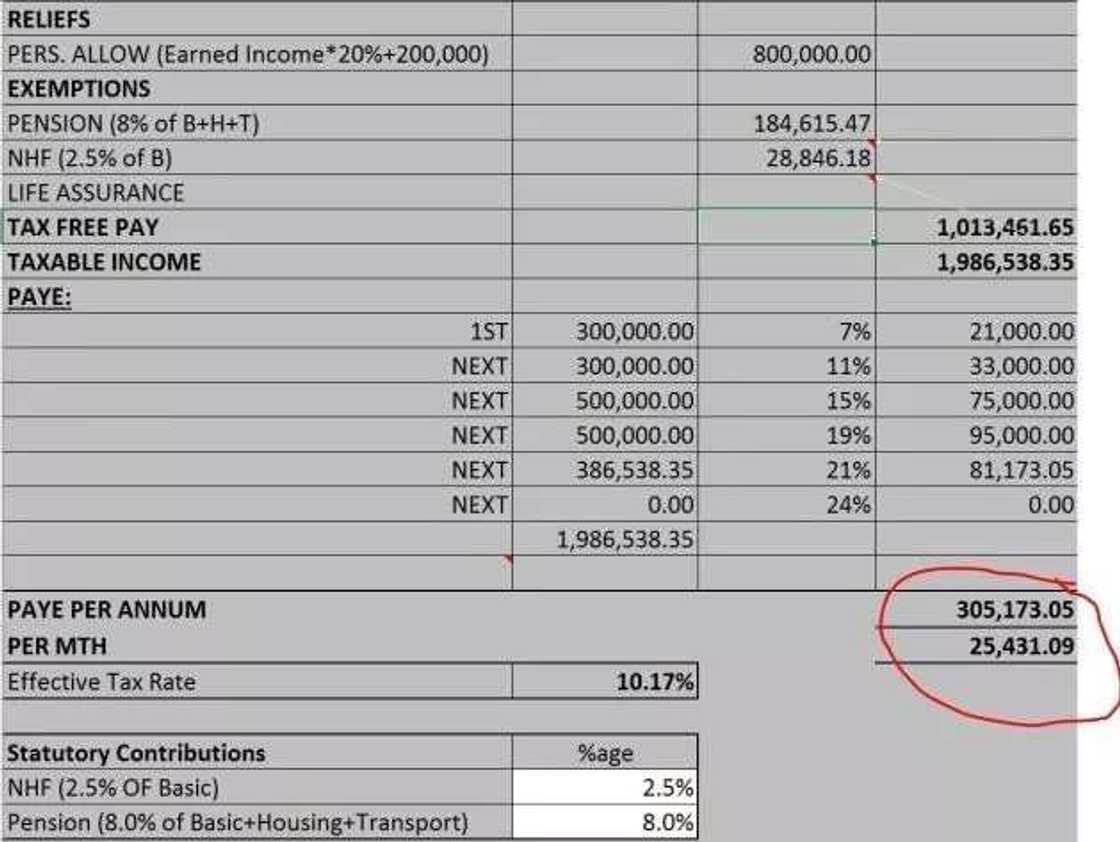
As you can see, the last row has zeroes in it, as there is nothing else left to tax. Thus, all we need to do now is add up the tax amounts for each portion of the income, and we will get the total amount of PAYE for a year, which is ₦305,173.05. If we divide the number by 12, we will receive the monthly PAYE, which is ₦25,431.09.
To determine the effective tax rate, we need to divide the yearly PAYE by the gross income. ₦305,173.05 divided by ₦3,000,000 gives us 10,17%.
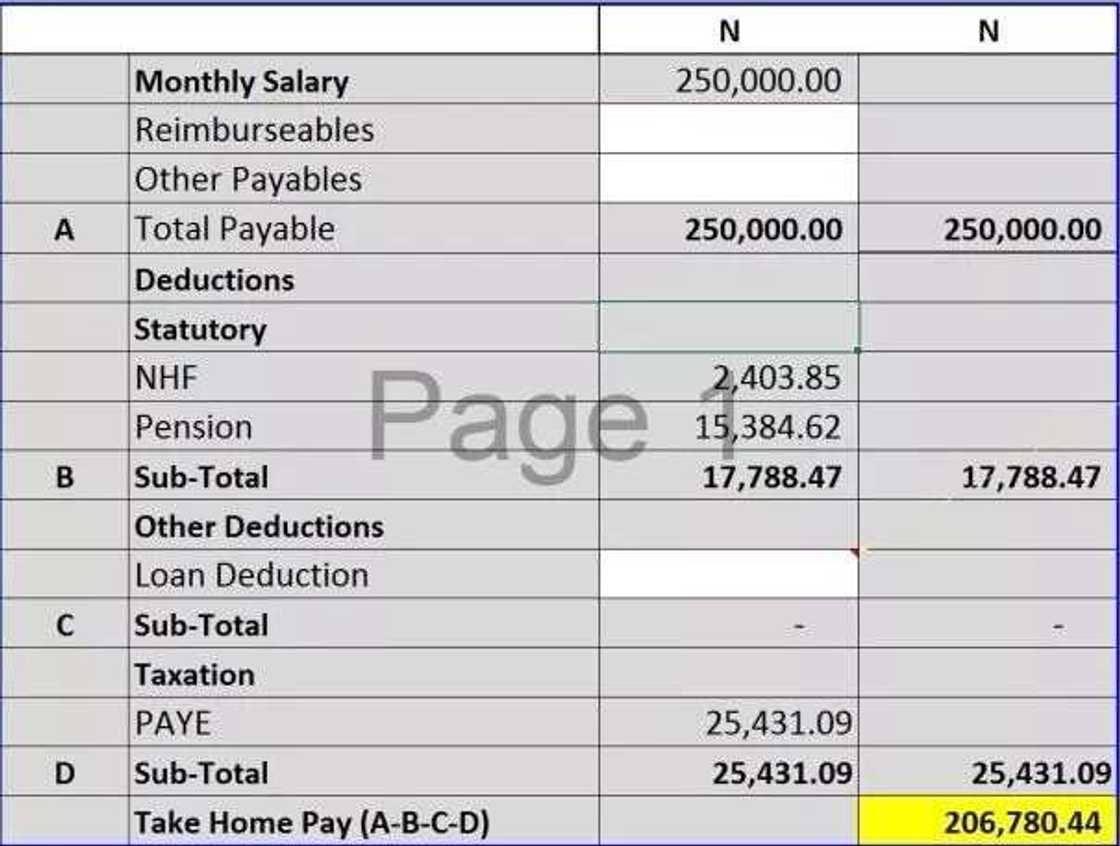
In the last picture, you can see how to calculate the take home salary, which a monthly salary without the deductions is and taxes.
And that is how you calculate PAYE in Nigeria. We hope we have been able to help you figure the system out. We would appreciate your feedback!
READ ALSO: History of taxation in Nigeria
Source: Legit.ng







